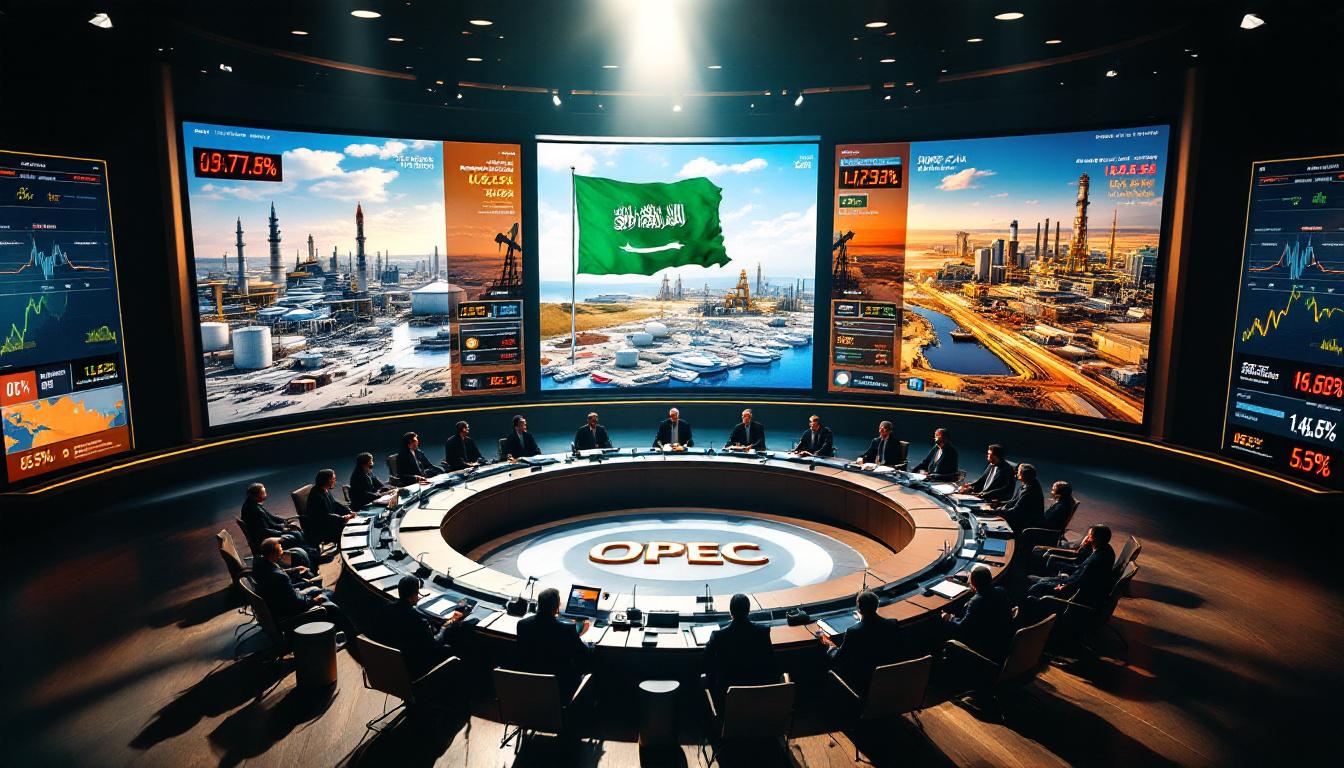What is MP Materials and Why is it Strategically Important?
MP Materials operates the Mountain Pass mine in California, the only active rare earth mining and processing facility in the United States. This operation has positioned the company as a critical player in America's efforts to rebuild domestic rare earth supply chains and reduce dependence on Chinese imports. The strategic importance of MP Materials extends far beyond typical resource extraction – it represents a cornerstone of national security and industrial self-sufficiency.
Mountain Pass primarily produces neodymium-praseodymium (NdPr), key components used in permanent magnets essential for electric vehicles, wind turbines, robotics, and defense applications. These rare earth elements are irreplaceable in creating the high-performance magnets that power modern technology and defense systems.
The Rise of a Domestic Rare Earth Champion
The significance of MP Materials becomes clearer when examining the defense applications of rare earth elements. According to the Congressional Research Service, a single F-35 fighter jet requires approximately 920 pounds of rare earth magnets, while Zumwalt-class destroyers need around 5,300 pounds for various systems. This dependency highlights why having a domestic supplier is critical to national security.
"MP Materials has positioned itself as a critical player in America's efforts to rebuild domestic rare earth supply chains and reduce dependence on Chinese imports." – Chris Berry, President, House Mountain Partners
The company's position as the sole domestic producer gives it unique leverage in an increasingly tense geopolitical landscape. With the U.S. currently relying on China for approximately 80% of its rare earth imports (according to USGS 2024 data), MP Materials represents America's most significant step toward supply chain independence in this critical minerals energy transition.
Strategic National Defense Implications
The rare earth supply chain has evolved from being viewed primarily through an environmental or economic lens to being recognized as crucial for national security. These elements are essential components in advanced military technologies including:
- Missile guidance systems
- Radar equipment
- Electronic warfare systems
- Communication devices
- Night vision technology
- Precision munitions
This strategic importance has elevated MP Materials' profile beyond just being a mining company to becoming a cornerstone of America's industrial security strategy. The Department of Defense has explicitly identified rare earth elements as "critical to national defense" in multiple assessments, underscoring why domestic production capability is now considered vital infrastructure.
The U.S. military's increasing reliance on high-tech systems means that secure access to rare earth elements has become non-negotiable for maintaining military readiness and technological superiority. MP Materials' success or failure directly impacts America's ability to maintain its defense capabilities independent of foreign suppliers.
How Did the Department of Defense Investment Transform MP Materials?
The Department of Defense (DoD) investment in MP Materials represents an unprecedented shift in how the U.S. government approaches critical mineral security. This landmark deal has fundamentally transformed the company's trajectory and de-risked its operations in ways that would have been impossible through private financing alone.
Unprecedented Government Support Package
The DoD support package for MP Materials includes multiple elements that combine to create extraordinary financial stability:
- $400 million preferred equity investment
- $150 million in loan offerings
- A 10-year price floor guarantee of $110 per kilogram for NdPr oxide
- Additional private sector financing coordination with JP Morgan and Goldman Sachs offering approximately $1 billion in debt
This comprehensive financial backing demonstrates the government's commitment to ensuring MP Materials' success as a strategic asset. The equity investment is particularly notable, as it represents a direct ownership stake rather than simply providing grants or loans.
Price Floor Significance
The $110/kg price floor guarantee represents perhaps the most significant aspect of the deal. According to data cited by Chris Berry, the current market price for NdPr oxide hovers around $60/kg, making the floor price nearly double current market rates.
"This price floor provides unprecedented revenue certainty, de-risking expansion plans… it signals a dramatic shift in U.S. government risk tolerance." – Chris Berry
This price guarantee is particularly remarkable considering historical pricing data from Adamas Intelligence shows that NdPr has only reached or exceeded $110/kg twice in the past 15 years during previous boom cycles (2009-2010 and 2021-2022). The floor effectively insulates MP Materials from the price volatility that has historically plagued rare earth markets.
From a financial perspective, the price floor functions as a government-backed put option, protecting MP Materials from potential Chinese market manipulation tactics that have historically been used to crush Western competitors. When Molycorp (MP Materials' predecessor at Mountain Pass) went bankrupt in 2015, one contributing factor was Chinese producers flooding the market with cheap rare earths.
Shift in Government Risk Appetite
This investment signals a dramatic evolution in the U.S. government's approach to securing critical materials. Rather than just providing grants or purchase guarantees, the DoD has taken a direct equity position and provided substantial financial backing, demonstrating a much higher risk tolerance than seen in previous critical materials initiatives.
The deal structure suggests a new template for public-private partnerships in critical minerals, where the government assumes certain market risks (in this case, price fluctuations) while private capital builds and operates the infrastructure. This model could potentially be replicated for other materials deemed essential for national security.
What Challenges Exist in the Rare Earth Supply Chain?
Despite growing interest and investment, the rare earth supply chain faces unique challenges that distinguish it from other commodity markets. These challenges help explain why government intervention has become necessary to secure domestic supply.
China's Dominant Market Position
China controls approximately 90% of global magnet manufacturing capacity and about 60% of rare earth mining operations, according to the USGS Mineral Commodity Summaries 2024. This market concentration gives China significant pricing power and control over these strategic materials, creating vulnerability for Western nations dependent on these resources.
The concentration is particularly acute in the midstream processing and downstream manufacturing segments of the supply chain. While mining operations exist outside China, the ability to process ore into separated rare earth oxides and then convert these into useful end products (like magnets) remains largely a Chinese capability.
Opaque Pricing Mechanisms
The rare earth market suffers from extremely opaque pricing mechanisms. Unlike commodities traded on major exchanges with transparent pricing, rare earth pricing information is limited, often controlled by Chinese interests like China Minmetals and Shenghe Resources, and difficult for Western investors to access or verify.
This price opacity creates significant challenges for:
- Project financing decisions
- Long-term contract negotiations
- Risk management strategies
- Investment analysis
Without reliable price discovery mechanisms, Western companies struggle to attract capital for new projects, as investors cannot easily assess the potential returns or risks involved.
Complex Processing Requirements
Rare earth processing represents one of the most technically challenging aspects of the supply chain. Unlike many commodities that can be simply mined and sold, rare earths require extraordinarily complex processing involving hundreds of steps to separate and purify the 17 rare earth elements.
Each deposit typically requires a customized processing flowsheet, making standardization difficult and increasing development costs and timelines. According to research published in the Journal of Rare Earths (2023), bastnäsite ore from Mountain Pass requires more than 500 solvent extraction steps to properly isolate each rare earth element.
The separation and purification stages represent the most challenging technical barriers to developing new supply sources. Currently, only three non-Chinese entities have mastered full separation capabilities: MP Materials, Lynas (operating in Malaysia), and Energy Fuels (with planned U.S. operations).
IP and Knowledge Gaps
When Western rare earth production was outsourced to China in previous decades, significant intellectual property and technical expertise was lost. The specialized knowledge required for rare earth separation and processing now largely resides in China, creating a substantial knowledge gap that Western companies must overcome.
This expertise deficit extends beyond technical know-how to include practical operational experience, supplier relationships, and market intelligence. Rebuilding this knowledge base requires time, investment in MP materials, and often government support to bridge the gap while new expertise develops.
How Does the Rare Earth Basket Price Affect Project Economics?
Understanding the economics of rare earth projects requires looking beyond simple mining costs to consider the complex interplay of multiple factors unique to this market.
Understanding Basket Value Calculations
Rare earth projects must be evaluated based on their "basket value" – the weighted average value of all rare earth elements present in a deposit. Each project contains different proportions of the 17 rare earth elements, with varying grades and concentrations.
A project's economic viability depends on several interconnected factors:
- The specific mix of rare earths in the deposit
- Current and projected prices for each element
- Recovery rates for each element
- Processing costs to separate and purify each element
This basket calculation creates significant complexity for investors. For instance, projects like Bear Lodge in Wyoming have higher dysprosium content but lower NdPr compared to Mountain Pass, according to URC's Feasibility Study (2023). This different composition creates entirely different economic profiles even with identical market prices.
Economic Challenges at Current Prices
At current price levels (approximately $60/kg for NdPr), many rare earth projects outside China struggle to demonstrate economic viability. Without government support or strategic investment, these projects face significant financing challenges despite strong demand signals for the end products.
"At $60/kg, projects without government support struggle… Price volatility deters financing." – Chris Berry
This economic reality helps explain why government intervention through price floors, equity investments, or other support mechanisms has become crucial for developing Western rare earth capacity. The gap between current market prices and economic breakeven points for many projects is simply too large to bridge through conventional financing.
Price Volatility Impacts
The extreme price volatility in rare earth markets creates additional challenges for project financing. Historical data shows that rare earth prices can fluctuate by 200-300% within a single year, making long-term planning exceptionally difficult.
Without mechanisms like the price floor guarantee provided to MP Materials, developers face substantial risks that prices could collapse below production costs before capital investments can be recovered. This volatility has historically deterred investment in the sector, as demonstrated by Rainbow Rare Earths' suspension of operations in Burundi in 2023 when basket values fell 40%.
What Does the Changing Narrative Mean for Critical Minerals?
The conversation around critical minerals has undergone a fundamental shift in recent years, with significant implications for investment, policy, and market dynamics.
From ESG to National Security
The narrative around critical minerals has shifted dramatically from an environmental, social, and governance (ESG) focus to a national security and industrial policy perspective. This transformation is evident in funding priorities, with the Department of Defense investing over $2 billion in critical minerals during 2024-2025 compared to the Department of Energy's $600 million under the Inflation Reduction Act.
"The narrative moved from 'net zero' to 'dig baby dig'… National security now drives policy." – Chris Berry
While environmental considerations remain important, they are increasingly taking a backseat to security of supply and domestic manufacturing capabilities. This shift reflects growing recognition that control of critical mineral supply chains represents a strategic vulnerability that transcends environmental concerns.
"Dig Baby Dig" vs. Net Zero
The previous emphasis on net-zero carbon emissions and environmental considerations as primary drivers for critical minerals development has evolved significantly. The new narrative emphasizes "energy dominance" and "dig baby dig" approaches that prioritize securing supply regardless of environmental footprint.
This represents a significant shift in how projects are positioned and marketed. While companies previously emphasized their environmental credentials to attract capital, they now highlight their strategic importance to national security and industrial self-sufficiency.
This shift is reflected in policy through:
- Expedited permitting for projects deemed critical to national security
- Relaxed environmental review requirements in some cases
- Increased tolerance for projects with larger carbon footprints
Public-Private Partnership Model
The MP Materials deal represents a new model for critical minerals development based on public-private partnerships. This approach combines government strategic investment with private sector expertise and capital, potentially creating a template for future critical minerals projects.
"MP Materials' deal sets a template: Government assumes price risk, private finance builds infrastructure." – Chris Berry
This model addresses a key challenge in critical minerals development: the gap between national security imperatives and market economics. By having government absorb certain risks (particularly price volatility) while private capital handles execution and operations, projects can move forward that would otherwise remain stalled.
The Defense Production Act Title III funding, which has increased by 300% in 2025 for critical minerals according to the Congressional Budget Office, provides a mechanism for implementing this partnership model more broadly across the sector.
What Are the Investment Implications for Rare Earth Companies?
The changing landscape for rare earth elements creates distinct investment opportunities 2025 that differ significantly from conventional mining investments.
Government Support as Key Differentiator
Government backing has become perhaps the most significant differentiator for rare earth companies. Projects with strong government support through equity investments, loans, grants, or price guarantees have substantially de-risked profiles compared to those relying solely on private capital.
"Government backing is the top differentiator… MP's rivals are 5+ years behind." – Chris Berry
This government support creates a bifurcated market where companies with official backing enjoy significant advantages:
- Access to lower-cost capital
- Price protection mechanisms
- Faster permitting and regulatory approval
- Priority access to offtake agreements with defense contractors
Investors need to carefully evaluate the nature and extent of government support when comparing rare earth opportunities, as this factor may outweigh traditional metrics like deposit grade or production costs.
Focus on Separation and Magnet Manufacturing
The highest value segments of the rare earth supply chain are in separation/purification and magnet manufacturing rather than mining operations. According to Adamas Intelligence (2024), magnet manufacturing represents approximately 60% of the total rare earth value chain.
Companies that can develop these downstream capabilities may capture significantly more value than those focused solely on mining operations. This vertical integration strategy is evident in MP Materials' plans to move from mining into separated oxides (Stage II) and eventually magnets (Stage III).
For investors, this means evaluating companies not just on their mining assets but on their strategy and capability to move downstream into higher-value processing and manufacturing.
Timeline Considerations
Investors must recognize that developing new rare earth supply chains requires extended timelines. Even with government support, bringing new separation capacity online typically requires 5-10 years from initial development to commercial production.
MP Materials' own timeline illustrates this challenge – despite being an existing operation with significant advantages, their Stage II separation facility is targeted for 2027 startup, representing a multi-year development cycle even with accelerated government support.
These extended timelines create significant challenges for investors:
- Longer periods before positive cash flow
- Increased exposure to market and policy changes
- Higher accumulated financing costs
- Greater technical and execution risks
Competitor Landscape
While MP Materials has secured significant government backing, numerous other projects in North America, Australia, and Europe continue to advance. These include both mining operations and separation facilities, creating a competitive landscape that will evolve over the coming years.
Key competitors include:
- North America: Energy Fuels, Ucore Rare Metals, USA Rare Earth
- Australia: Lynas Rare Earths, Iluka Resources, Arafura Resources
- Europe: Neo Performance Materials, Less Common Metals
Each competitor is seeking its own government support package, potentially creating a more crowded market in the 5-10 year timeframe than current supply-demand analyses suggest.
How Does the Rare Earth Market Compare to Other Critical Minerals?
Rare earth elements exhibit unique market characteristics that distinguish them from other critical minerals, creating both challenges and opportunities for investors.
Lithium Market Parallels
The rare earth market shares some similarities with lithium, including price volatility and Chinese market dominance. However, lithium benefits from greater price transparency, more diverse supply sources, and less complex processing requirements compared to rare earths.
Key differences include:
- Price discovery: Lithium has established benchmarks and futures contracts; rare earths remain opaque
- Processing complexity: Lithium requires 5-7 major processing steps; rare earths need hundreds
- End-use diversity: Lithium demand is concentrated in batteries; rare earths serve dozens of applications
- Supply concentration: Lithium production spans multiple countries; rare earth processing remains China-dominated
These differences help explain why lithium projects have attracted significantly more capital than rare earth projects, despite both being essential for the Australia critical minerals reserve.
Copper and Battery Metals Demand
Copper and lithium remain at the epicenter of critical minerals demand regardless of whether the narrative focuses on ESG or national defense. Both metals benefit from robust demand signals across multiple sectors including electric vehicles, energy storage, and data centers.
Unlike rare earths, copper enjoys:
- Transparent pricing through major exchanges
- Diverse global production
- Well-established refining infrastructure
- Deep, liquid futures markets
These advantages create a fundamentally different investment landscape compared to rare earths, with copper projects typically facing fewer obstacles to financing despite sharing the "critical mineral" designation.
Processing Capacity Bottlenecks
Across all critical minerals (rare earths, lithium, graphite, etc.), refining and processing capacity represents the primary bottleneck rather than mining capacity. Government support increasingly focuses on developing this midstream processing capacity rather than just extractive operations.
The recent 93% tariff imposed on Chinese graphite anode materials (U.S. Department of Commerce, June 2025) exemplifies this focus on processing. The tariff accelerated Novonix's Tennessee anode plant development while highlighting the vulnerability of relying on Chinese midstream processing.
This processing focus creates opportunities for companies that can master the technical challenges of [mineral beneficiation insights](https://discoveryalert.com.au/news/
Ready to Stay Ahead of the Next Major Mining Discovery?
Don't miss out on the next strategic mineral opportunity like MP Materials—visit Discovery Alert's discoveries page to see how our proprietary Discovery IQ model provides instant, actionable alerts on significant ASX mineral discoveries, giving subscribers a market-leading edge before the broader market reacts.




